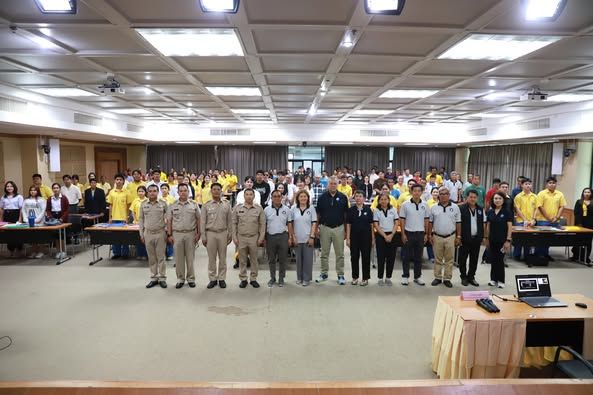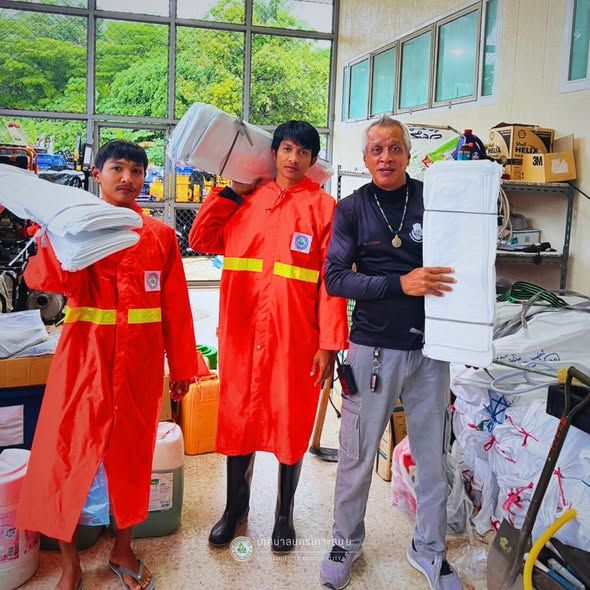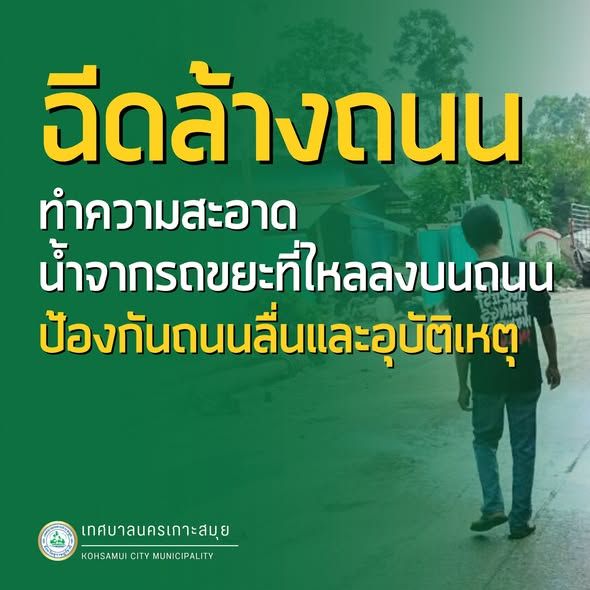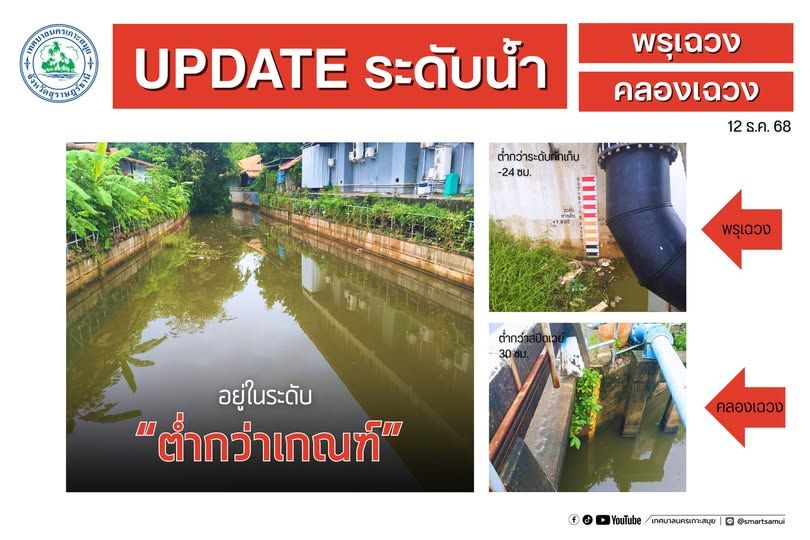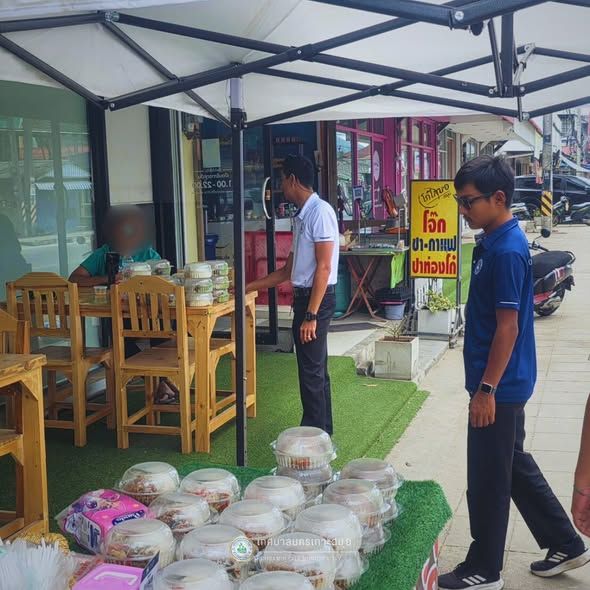Koh Samui is becoming a prime spot for astrotourism thanks to a “Dark Sky Management for Community Tourism” training at the Interdisciplinary College! This initiative, supported by the Koh Samui Municipality, aims to preserve our night skies and offer cosmic adventures, with experts sharing insights on light pollution and stargazing.
KohSamui #Astrotourism #DarkSky #Stargazing #Thailand #SustainableTourism #TravelThailand #NightSky #CosmicAdventures #IslandLife #EcoTourism #ExploreThailand #InterdisciplinaryCollege
Overview of the Event
On August 25, 2025, the Chaweng Meeting Room at Koh Samui Interdisciplinary College in Surat Thani Province hosted the second session of the training activity titled “Dark Sky Management for Community Tourism.” This session was held as part of the ongoing project to promote and publicize astronomical tourism throughout the 2025 fiscal year. The event was officially opened by Mr. Prasert Rattanawicha, the Permanent Secretary of Koh Samui City Municipality. The opening ceremony featured remarks from Mr. Sommat Chukaew, Head of the Municipal Secretary Office, and was attended by municipal council members, government department heads, and municipal staff.
Objectives and Scope
The training aimed to enhance Koh Samui’s capabilities as a destination for astrotourism, encouraging the development of sustainable tourism practices that protect the environment and preserve dark skies. The activities were specifically designed to:
- Increase awareness about light pollution and its impact on both tourism and local ecosystems.
- Provide practical guidance on managing lighting in tourist areas.
- Demonstrate the use of astronomical tools and equipment.
- Promote community engagement in developing stargazing tourism.
Key Activities and Content
Day 1: Lectures and Knowledge Sharing
The first day featured a series of key lectures delivered by experts in astronomy and tourism. Highlights included:
- Case Study: Community Stargazing in Japan – This session explored successful models of stargazing tourism and community involvement from Japan, providing valuable lessons and ideas adaptable to local contexts.
- Lighting Management at Tourist Sites – Participants learned about best practices for minimizing light pollution, including the use of shielded lighting and appropriate illumination levels in tourism zones.
- Introduction to Astronomical Tools – Demonstrations on the setup and use of telescopes, star charts, and other stargazing equipment were provided, equipping participants with practical skills.
- Basic Stargazing Practice – Theoretical and practical approaches to observing celestial objects were introduced, fostering an appreciation for astronomy among attendees.
Day 2: Hands-On Workshop in the Community
On the second day, a hands-on workshop took place in the Sai Yo community area of Bo Phut Subdistrict. This workshop provided participants with experiential learning opportunities, including:
- Field practice in stargazing under local sky conditions.
- Interactive sessions with experts facilitating the exchange of ideas and experiences.
- Community-driven discussions about integrating astrotourism into local tourism strategies.
Significance of the Initiative
This training activity forms a critical part of Koh Samui’s broader initiative to develop and market itself as an astrotourism destination. By building local capacity and fostering community participation, the project aims to attract both Thai and international tourists seeking sustainable and educational travel experiences. The initiative also emphasizes environmental stewardship, particularly in combating light pollution and conserving dark skies, which are essential for quality astronomical observations and ecological health.
Additional Information on Astrotourism and Dark Sky Conservation
Astrotourism is a rapidly growing segment of the global tourism industry, appealing to travelers interested in astronomy, science, and nature. Dark sky conservation efforts, such as those promoted through this training, not only enhance the quality of stargazing but also benefit wildlife and human well-being by reducing nocturnal light pollution. International organizations, such as the International Dark-Sky Association, recognize communities that implement effective dark sky practices, further boosting their tourism appeal. Koh Samui’s proactive steps in this direction position it as a leader in sustainable tourism within the region.
Partners and Support
The training was supported by the Koh Samui Municipality, local government agencies, and tourism stakeholders. Collaboration with national institutes, such as the National Astronomical Research Institute, underscores the importance of integrating scientific expertise into community-based tourism development.
Photo and news courtesy of Koh Samui Municipality Public Relations.
Frequently Asked Questions
FAQ: Dark Sky Management for Community Tourism Training Activity
What is the purpose of the “Dark Sky Management for Community Tourism” training in Koh Samui?
The training aims to enhance Koh Samui’s potential as an astrotourism destination by promoting sustainable tourism practices that protect the night sky, reduce light pollution, educate the community, and foster local involvement in stargazing tourism.
How does the training benefit the local community and tourism sector?
The program provides practical guidance on managing lighting in tourist areas, introduces astronomical tools and stargazing skills, and creates opportunities for hands-on learning. This empowers the community to participate in eco-friendly tourism initiatives, attracts both Thai and international visitors, and supports economic and environmental sustainability.
Why is preserving dark skies important for Koh Samui?
Preserving dark skies is essential for high-quality astrotourism experiences, protecting wildlife, and maintaining ecological health. By reducing light pollution and adopting best practices, Koh Samui enhances its appeal as a destination for travelers interested in astronomy and sustainable travel, while also contributing to the well-being of local residents and nature.
